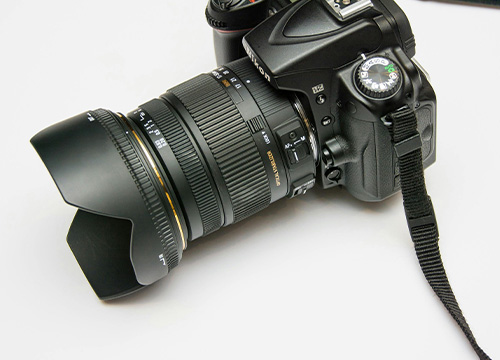As a professional restoration company, we’ve seen firsthand how proper documentation can make or break an insurance claim for water damage. Whether you’re dealing with a burst pipe, flooding, or any other water-related disaster, thorough documentation is crucial for ensuring you receive fair compensation. Remember that your insurance company needs to know that you aren’t exaggerating the damages, or trying to commit insurance fraud.
With proper documentation you’re much more likely to have success with making a claim. In this guide we’ll show you how to document your damages to increase your changes at getting compensation.
Don’t forget that we will document your damages for you! If you’ve hired Pristine Restoration, our team will thoroughly document all the damages once we’re on the scene and help you with filing an insurance claim! Nevertheless, it’s a great idea to document damages right when they first happen.
Table of Contents
Initial Documentation
The first step in documenting water damage is to capture the big picture. This initial documentation is crucial as it provides context for the extent of the damage.
Step 1: Wide-Angle Photos of Rooms
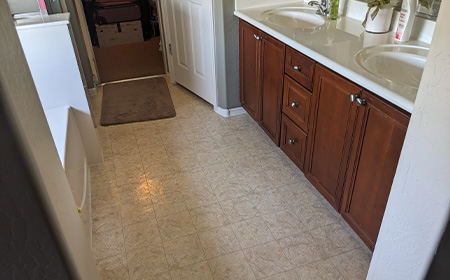
Start by using your smartphone to take wide-angle photos of each affected room. These shots should encompass as much of the space as possible. For example, if your living room has been damaged, take photos from each corner of the room to show the full scope of the damage. These images will help insurance adjusters understand the overall impact on your home.
Step 2: Close-Up Photos of Damaged Areas
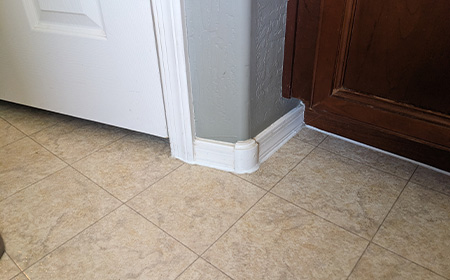
After capturing the broad view, focus on taking close-up photos of specific damaged areas. This might include water stains on walls, warped floorboards, or damaged furniture. Be sure to take multiple angles of each damaged area to provide a comprehensive view.
Step 3: Documenting Damaged Items
Now that you’ve documented the scene, it’s time to capture good evidence on individual valuable items. This detailed documentation will be essential when it comes to claiming compensation for valuable possessions.
Take clear, detailed photos of each affected possession. This includes furniture, electronics, clothing, and any other items that have been damaged by water. For valuable items, try to capture any serial numbers, identifying marks, model, or brand.
The Importance of Not Altering The Scene
It’s crucial to document the damage before any cleanup or repairs begin. Your insurance company needs to see the damage as it originally occurred. Resist the urge to start cleaning up immediately, as this could potentially harm your claim. Only make changes that are absolutely necessary for safety reasons, such as turning off electricity if water is near electrical outlets.
How to Take Good Photos
When documenting water damage, the quality of your photos can significantly impact your claim. If your photos are blurry or unclear, your evidence may be denied. Here are some tips to ensure you’re taking the best possible photos:
1. Use A Newer Cell Phone Camera

Modern smartphones typically have high-quality cameras that are more than adequate for documentation purposes. If you don’t have a newer camera, look for a friend or family member who has one you can borrow.
2. Add Light to The Scene
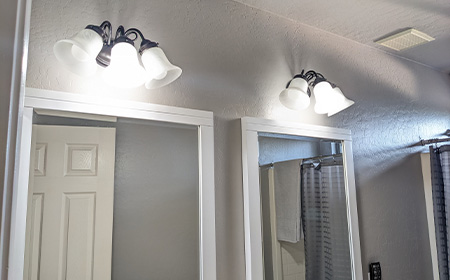
Turn on all available lights in the room. Open curtains and blinds to let in natural light. If you have nothing available in the room, find a flashlight as a next best option. Good lighting is crucial for capturing accurate colors and details of the damage.
3. Make Sure Your Shots Are in Focus
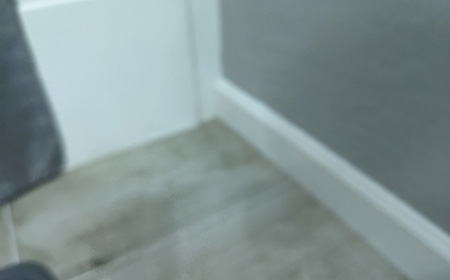
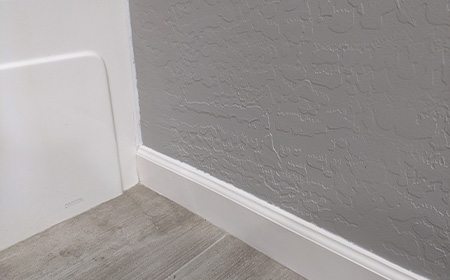
Make sure your photos are in focus. Blurry images may not be accepted as evidence by your insurance company. Try to stand as still as possible when taking the photos; movement will introduce blur, especially if it’s dark. Take multiple shots of each item or area to ensure you have at least one clear image.
4. Add A Point of Reference to The Picture
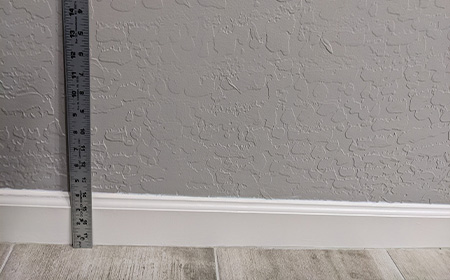
When photographing damage, include a common object for scale. This could be a ruler, a coin, or even a standard-sized piece of paper. This helps provide context for the size of the damaged area.
Preserving Evidence
While it may be tempting to start cleanup immediately, it’s crucial to preserve evidence for your claim. You may be tempted to clean up, or do some of the work yourself right away, but this won’t help you when your making your case to your insurance company.
1. Avoid Throwing Away Damaged Items
Keep damaged items, even if they seem beyond repair. Take any valuable items and store them somewhere safe and dry. Your insurance adjuster may need to inspect them to assess their value and the extent of the damage. If you must dispose of items for health or safety reasons, be sure to thoroughly document them first.
2. Only make changes necessary for safety
There may be situations where you need to make immediate changes for safety reasons. For example, if water is pooling near electrical outlets, you may need to move furniture or belongings away from the area. In these cases, document the scene thoroughly before making any changes, and explain in your notes why the changes were necessary.
Tracking Ongoing Damages
Water damage doesn’t always reveal itself immediately. It’s important to monitor the situation over time and document any changes or additional damage that becomes apparent.
Check affected areas regularly for signs of expanding damage. This could include:
- Spreading water stains
- Peeling paint or wallpaper
- Warping of wood floors or furniture
- Potential Mold Growth
Take regular photos to show progression Continue to take photos over the days and weeks following the initial damage. This can help demonstrate the full extent of the damage, especially if it worsens over time. For example, you might take photos every day for the first week, then once a week after that.
Documenting Your Expenses
Temporary relocation costs If your home is uninhabitable due to water damage, you may need to stay in a hotel or rental property. Keep all receipts related to your temporary housing, including:
- Hotel or rental costs
- Meals (if you don’t have access to kitchen facilities)
- Laundry services
- Pet boarding, if necessary
Receipts for damaged items As you replace essential items, keep all receipts. This includes clothing, toiletries, and any other necessary items you need to purchase due to the damage. Remember that ideally you want insurance to cover not only repairs and replaced goods, but also all the costs you incur because of the damages.
Costs of emergency repairs or mitigation If you need to make emergency repairs to prevent further damage, document these carefully. This might include:
- Cost of tarps to cover a damaged roof
- Fees for a plumber to stop a leak
Keep all receipts and take photos of any emergency repair work.
Dealing With Insurance
Effective communication with your insurance company is key to a successful claim.
Every time you speak with someone from your insurance company, take notes. Always keep track of the following:
- The date and time of the conversation
- The name and job title of the person you spoke with
- A summary of what was discussed
- Any promises or commitments made by the insurance company
Record dates and content of conversations It’s easy to forget details over time, so make these notes immediately after each conversation. You might find it helpful to keep a dedicated notebook or digital document for this purpose.
Keep copies of all emails, letters, and text messages related to your claim. If you’re using a digital folder system, you might create a subfolder specifically for insurance correspondence.
Organizing Your Documents
Staying organized throughout the claims process will save you time and stress. The last thing you want to do is lose a key piece of evidence that would prove to your insurance company that you’re not exaggerating the damages or trying to commit fraud.
Create a main folder on your computer or cloud storage service for all claim-related documents. Within this, you might have subfolders for:
- Photos (organized by date or room)
- Scanned receipts
- Insurance correspondence
- Contractor estimates and invoices
While digital copies are convenient, it’s important to keep original documents as well. Use a sturdy folder or binder to store:
- Original receipts
- Handwritten notes from conversations with insurance representatives
- Any physical mail received from your insurance company
- Contractor business cards and paper estimates
Having Peace Through Dealing With Insurance
Dealing with water damage is undoubtedly stressful, but proper documentation can significantly ease the insurance claim process. By following these steps – taking comprehensive photos, preserving evidence, tracking expenses, and maintaining detailed records of all communications – you’ll be well-prepared to file a successful claim.
Remember, as a professional restoration company, we’re here to help. While this guide provides a solid foundation for documenting water damage, every situation is unique. Don’t hesitate to reach out to professionals for guidance or assistance in navigating your specific circumstances. And don’t forget that if you hire Pristine Restoration, we’ll do all the documentation for you!
By taking these steps, you’re not just documenting damage – you’re protecting your home and your financial future. Stay diligent, stay organized, and remember that thorough documentation is your best ally in the insurance claim process. With careful attention to detail and comprehensive record-keeping, you can turn a challenging situation into a manageable process, ensuring that you receive fair compensation for your water damage claim.

